The heart of every Ferrari is the engine and the 365 GTC/4 is no different. Enzo was famously quoted as saying "I build engines and attach wheels to them" and his small-displacement, flexible, and high-revving V-12s are what his company's reputation is built upon.
Designated Tipo F101 AC 000, the GTC/4's powerplant was derived from the "Columbo" V12 originally designed by Gioacchino Colombo for Ferrari in 1947. It began life displacing 1,500cc and producing about 75 horsepower but in the 365 GTC/4 it displaced 4,390cc and made well over 300 bhp and would rev past 7,000 rpm. The 365 GTC/4 version was similar to the DOHC Tipo 251 60 degree V12 engine already used in the Daytona. Displacement of both these units was 4390cc thanks to a bore and stroke of 81mm x 71mm respectively. However, the F101 featured new heads, wet sump lubrication, a lower compression ratio of 8.8:1 and six side draught Weber 38 DCOE carburetors. Power for the European version was 340bhp at 7000rpm while Ferrari's North American version fitted with emissions equipment lost around 20bhp. But as a result of fitting side-draft carburetors, the Tipo F101's dimensions were wider and lower than with downdraught's, this allowing the GTC/4 to use a noticeably more shallow hood than the Daytona.
The engine block, sump, heads and auxiliary housings are all alloy castings made at the Ferrari factory in Maranello. Centrifugally cast steel cylinder liners are shrunk into the block and incline towards the heart of the engine, a 52-pound crankshaft, machined to close tolerances by stages from a 300-pound billet of steel.
In the GTC/4, the heads have horizontal intake porting and breathe straight in from each Weber carburetor throat, an arrangement that is actually more conducive to making power than the centrally located intake in the Daytona. The DOHC heads utilize two valves per cylinder at 45° included angle. Valve timing is 43-38-38-34, relatively mild for a Ferrari engine, and allows excellent torque delivery through a wide rpm range. The cams are driven directly via a very long roller chain. The wet-sump lubrication system holds 17 quarts of oil.
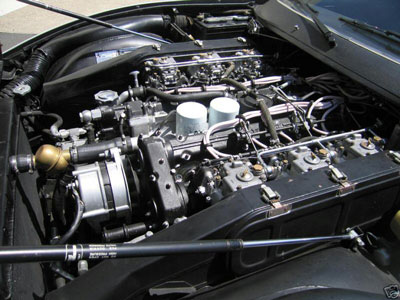
Outside the USA, the engines had no smog equipment and made 340 bhp (15865).
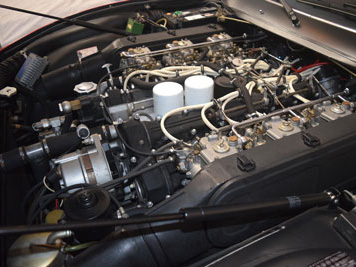
US motors had two distributors, thermo flaps in the air cleaners, different igition, an air pump, vapor recovery, etc. and made 320 bhp (15505).
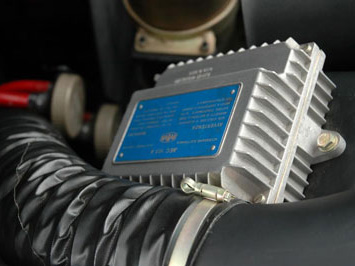
US ignition used two capacitive discharge units from Magetti Marelli, mounted on each inner fender well (15505).
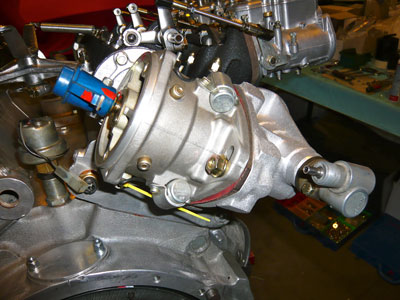
Non-US motors had a single distributor feeding all 12 cylinders (15089).
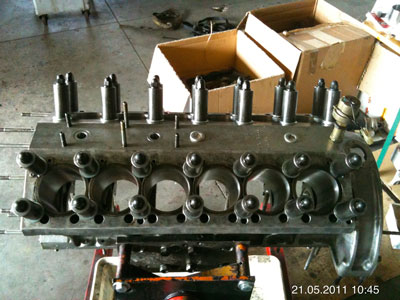
The engine block itself is not that large or complex (15089).
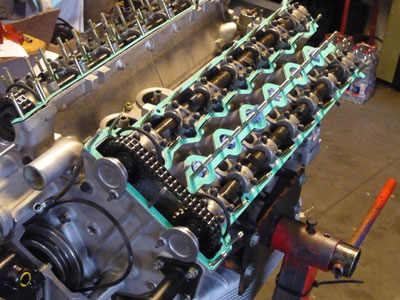
The cylinder heads are massive, housing 2 overhead cams each. Intake is directly from each carb throat.
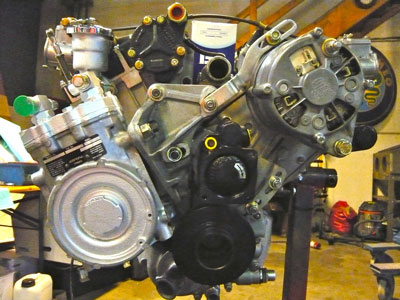
All cars had A/C, power steering and alternator mounted with pulleys facing the engine. US cars also had an air pump located below the alternator (15089).
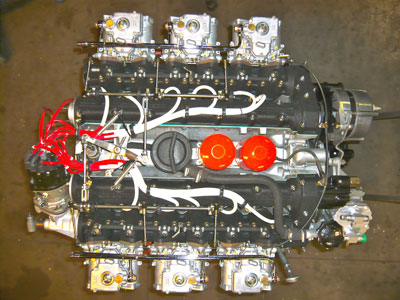
A complete euro engine showing single distributor is a sight to behold, and to hear.
The lovely 4.4 liter V-12 engine provides great power and torque and the exhaust system on the 365 GTC/4 makes a deep throaty rumble which is much more aggressive sounding than even that of the Daytona. Opening the hood always impresses. Everything comes in multiples with this car. The six side-draft carburetors necessitated by the low hoodline sit flat atop the motor, making it appear big and wide, which it is. In the center of the 4 camshafts are two oil filters to clean the 17 quarts of oil required by the engine, along with the complex throttle linkage required to open the 12 throats of those 38DCOE Webers. Tucked under the cowl is the spark distribution (two distributors on US models). In US models, each dizzy houses two sets of points and is sparked by a "Dinoplex" electronic coil unit mounted on each of the fender wells.